Since the marine environment is much more complex than that on land, general marine organisms are more fertile than terrestrial organisms, and their methods of courtship, reproduction, and reproduction are all very clever. Even so, among the numerous marine biological communities, only a few strong ones survived after adapting to their living environment. This is because in the ocean, different living environments are formed due to different conditions such as light, pressure, salinity, currents, tides, waves, nutrients, and geology. In various environments, no matter what kind of creature it is, as long as it survives, it has an amazing ability to adapt to the surrounding environment. Of course, this adaptability is not unlimited. When the environment suddenly changes due to external factors, Exceeding the physiological allowable limits of their organisms, these organisms will die if they do not escape. From another perspective, there is also a survival need for mutual adaptation among the numerous groups of marine organisms. This interdependent survival need exists under the relationship of the food chain. This relationship has gone through a long process of evolution and evolution, forming a relatively stable structure that protects the ecological balance. In different marine environments, there are completely different types of ecosystems. For example, the intertidal ecosystem consists of various organisms in the intertidal zone. Each of these ecosystems is organized after they adapt to their own living environment. This is the ecosystem of the entire ocean.
The nature of seawater determines the richness and characteristics of marine life, and it is different in every corner of the ocean. Its horizontal changes are much faster than their vertical changes. This characteristic determines the living environment of plankton and benthic organisms. Seawater quickly absorbs the light and heat radiated by the sun. Since seawater contains various suspended substances and phytoplankton, the depth of sunlight radiated into seawater in the open ocean is greater than several hundred meters, while in turbid coastal waters, the radiation depth is Only tens of meters. Below the light layer and thousands of meters below the seabed, it is pitch black. Seawater also becomes cooler as depth increases.
It is obvious that the form, habits and color of living things change with depth. Therefore, the organisms in each water layer have common characteristics. In the top ten centimeters of water, there are carnivorous blue crustaceans, molluscs and siphonophores. Below is the low-light layer, where reddish and black animals replace the transparent invertebrates. Further down, there is the dark deep sea area, whose light comes from the light-emitting organs of bottom-dwelling fish such as squid and lantern fish. The organisms living on the seafloor also change with depth, from the continental shelf to the continental slope to the deep seafloor. On the muddy seabed, burrowing animals dominate, while on the deep-sea soft muddy seafloor, fish, crustaceans and aquarium/sea-cucumbers.html">sea cucumbers dominate. For those fish that make a living by sucking suspended matter from seawater, their numbers are inversely proportional to depth; while for those fish that feed from seabed sediments, they can live at very deep depths.
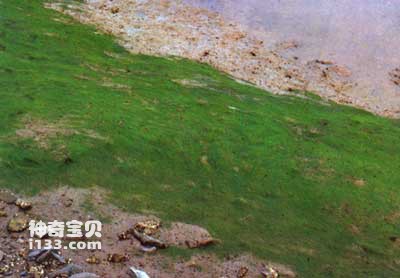
1. Light organisms
Photobionts refer to those marine organisms that can carry out light synthesis, which mainly include phytoplankton and benthic algae. Enteromorpha is a benthic algae with green algae and a worldwide temperate marine algae. Enteromorpha grows on tidal flats or rocks in the mid-tide period, and its peak growth period is from January to April of the following year.
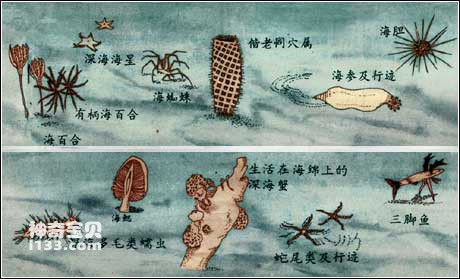
2. Deep sea creatures
Life in the depths of the ocean Are there any living things in the deep sea? About 100 years ago, the British scientist Edward Forbes made a definite conclusion: there are no living things in the waters below 500 meters in the ocean. However, in the 1850s, his conclusion was denied. When people were laying submarine cables, they discovered that a variety of different creatures lived on the seabed about 2,000 meters deep. An even more surprising discovery was made in the 1960s, when two divers discovered a special kind of flat fish and crimson shrimp at a depth of 11,022 meters.
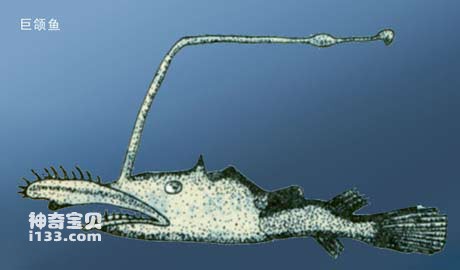
Are there any plants in the deep sea? We know that the pressure of sea water is very high. The pressure an adult experiences on the seabed at a depth of 4,000 meters is approximately equivalent to the pressure of 20 locomotives on the body. Someone has studied that the temperature in the deep sea area remains unchanged all year round, generally around zero, and there is very little oxygen in the water. In a dark seabed, the intensity of sunlight can no longer sustain the photosynthesis of plants. Therefore, in the deep sea, plants cannot Survive.
So how many aquarium/52-marine-animals.html">marine animals are there that live deep under the sea? The answer is countless. In order to adapt to the underwater environment with neither light nor food, some deep-sea fish have large and protruding eyes, some have degenerated eyes, generally have large mouths, and all of them have strange shapes.
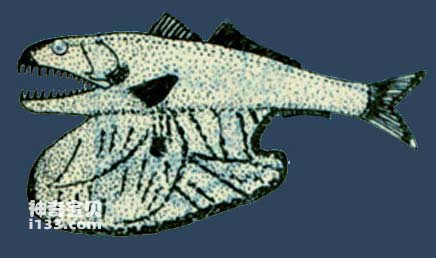
Megagnathus
The eyes of Megagnathus are large and protruding, like a telescope. These special eyes can hunt food in the dark.
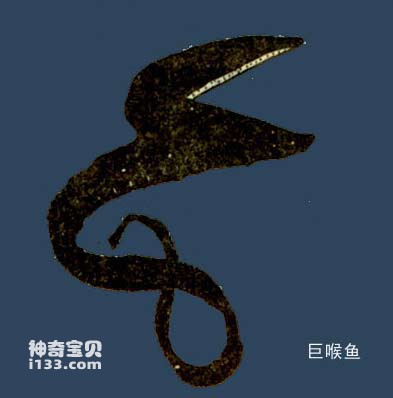
Giant Throat Fish
The giant-throated fish is very interesting. It always waits with its beak open all day long, and can fill its stomach without any effort.
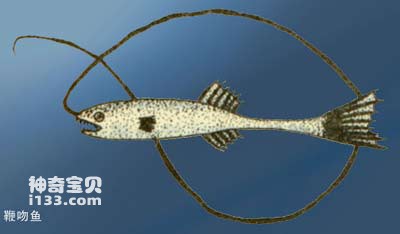
forked fish
The joints of the upper and lower jaws of the forked fish are very flexible, and they can open their mouths very wide, and can swallow animals three times larger than their own bodies. The stomach of the forked fish is also very large, accounting for about 1/3 of the body. The food swallowed can be stored in the stomach and digested slowly. In this way, if you are full at one time, you can not eat in a short period of time. It doesn't matter. In addition, there are sawfish, black whale rhinoceros, tree bearded fish, lantern fish and whipbeak fish.

sea urchin
Echinoderms cannot survive in fresh water, but they can grow and develop in deep sea. The sea urchin is covered with long needles, standing up in all directions, looking very majestic. Although they move slowly, most animals would not dare to invade them.
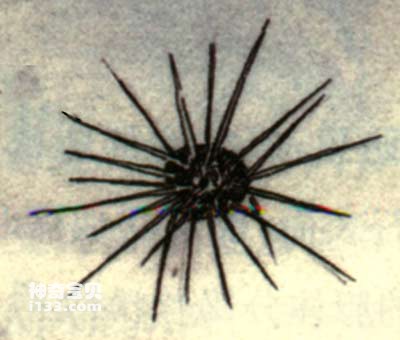
sea lily
Sea flowers look like flowers and sway gently with the waves. Anyone who sees them will think they are flowers in the sea. In fact, it is not a plant, but an animal, and its scientific name is sea lily. It grows on the seabed, where the water is calm and there are no waves. It can live as long as it is supported by its slender "feet". The current carries tiny organisms in the water to the crinoid's mouth, where it can enjoy its harvest.
3. Creatures in the Cold Zone
Penguins are a typical cold zone creature and a special bird on the earth. They cannot fly high, but they can swim, bathe and forage in the vast ocean. Usually, in people's minds, penguins only seem to live on the endless, dazzling white Antarctic ice sheets, and are a unique product of Antarctica. In fact, as the cold current spreads northward, penguins can reach 38 degrees south latitude in Oceania (Australia) and 17 degrees south latitude in Africa. Some species even extend to the Galapagos Islands near the equator of South America.
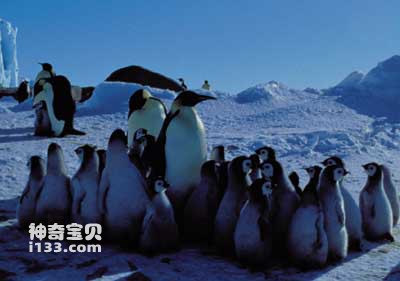
penguin
4. Tropical organisms

A wide variety of marine life lives in tropical waters. Among them is the world-famous Great Barrier Reef biome. Coral reefs are a biological community composed of corals and are one of the four most productive ecological areas in the world. Beautifully colored species also live in the coral reef ecological area. The coral fish constitute a colorful underwater world.
5. Intertidal zone organisms
Intertidal marine life belongs to a category of marine life and is named after the special location of their living space - the intertidal zone. There are many types of such combinations of animals and plants. Here we mainly introduce mussels, common limpets, barnacles, red sea anemones, sand beetles, common cockles, sword leeches, etc. Although they are different, they all have similar characteristics and living habits.
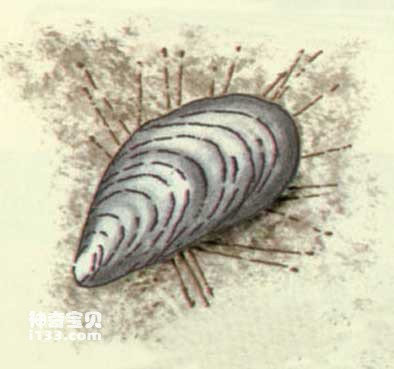
intertidal zone organisms
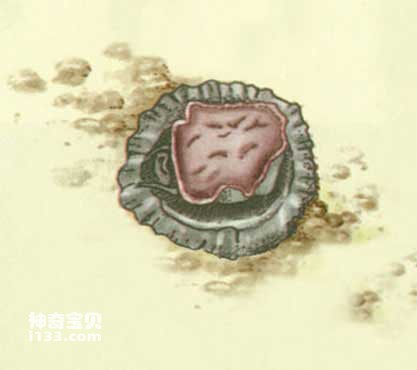
mussels
Large groups live densely on rock surfaces in layers or mats. The glands near the feet secrete filamentous mucus. The mucus filaments adhere to the rocks and harden quickly, fixing them in the habitat.

Portuguese common limpet
In order to protect itself from the impact of sea water, it has a hard shell with a wide base, and it can adhere to rocks at low tide with its muscular feet attached to its lower side.
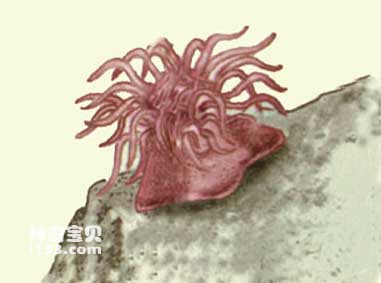
Teng Hu
The shell is hard and firmly attached to the rock. The shell is composed of 6 overlapping plates, with an opening in the upper part and covered by plywood. When submerged, these plywoods open up and extend their long whiskers in search of food.
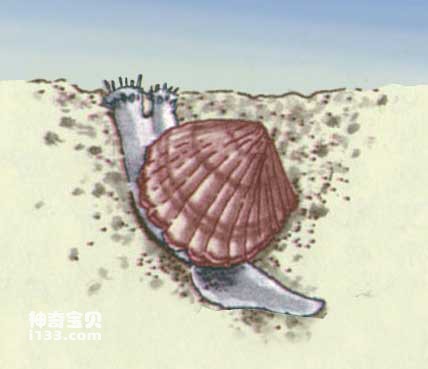
red anemone
One of many sea anemones that live on the coast. Some live on rocks, others are adapted to live in sand caves. When the tide goes out, the tentacles retract into the body.

sand beetle
The most common type of Confucian worm lives in curved tubular burrows. Feed on organic matter particles in the sand.

common cockle
Adapted to living in mud and sand, it dives into the sand with its muscular feet and leaves two feeding straws on the surface. Water is sucked in through the lower straw, and after filtering, it is discharged through the upper straw.
Sword Leech
It can quickly dive into the sand to avoid threats. When its hands are agitated, its feet will expand and stick to the sand, and its powerful muscular hands will quickly pull the animal into its hole.
animal tags:
We created this article in conjunction with AI technology, then made sure it was fact-checked and edited by a Animals Top editor.